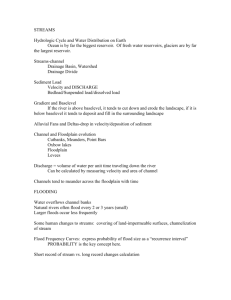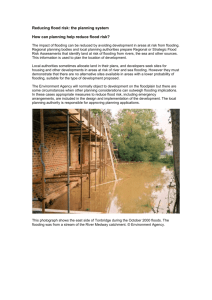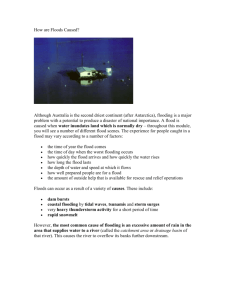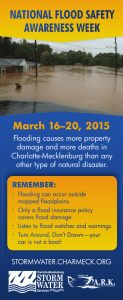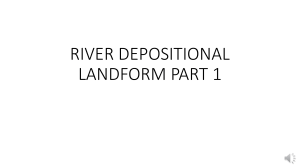streams - University of Hawaii at Hilo
advertisement
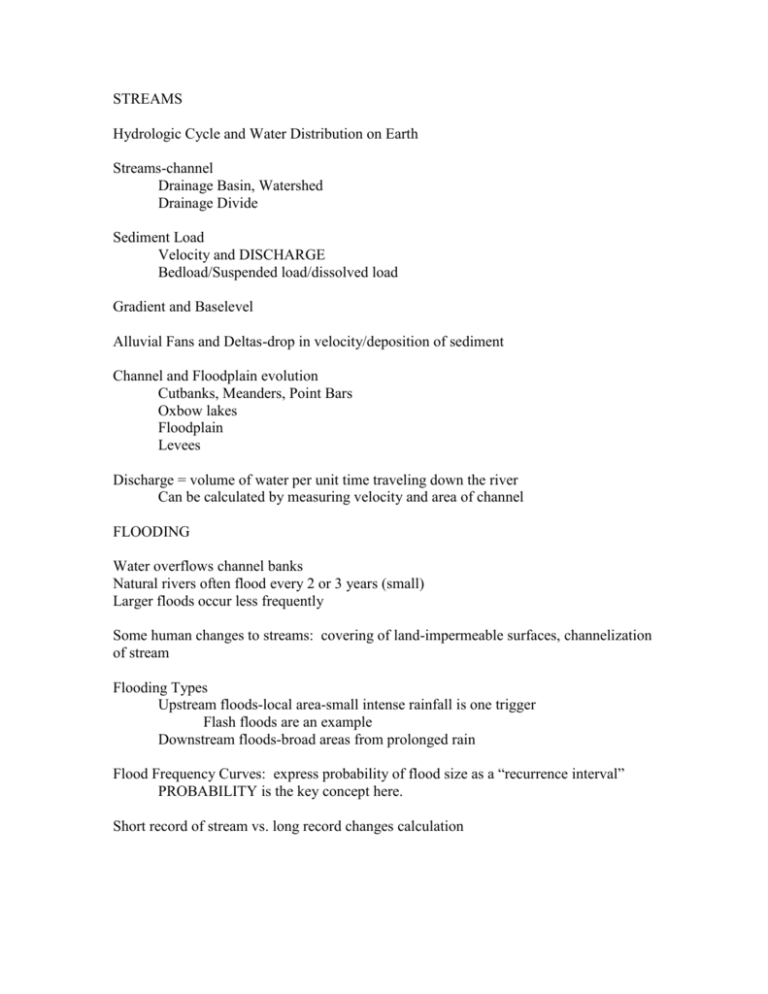
STREAMS Hydrologic Cycle and Water Distribution on Earth Streams-channel Drainage Basin, Watershed Drainage Divide Sediment Load Velocity and DISCHARGE Bedload/Suspended load/dissolved load Gradient and Baselevel Alluvial Fans and Deltas-drop in velocity/deposition of sediment Channel and Floodplain evolution Cutbanks, Meanders, Point Bars Oxbow lakes Floodplain Levees Discharge = volume of water per unit time traveling down the river Can be calculated by measuring velocity and area of channel FLOODING Water overflows channel banks Natural rivers often flood every 2 or 3 years (small) Larger floods occur less frequently Some human changes to streams: covering of land-impermeable surfaces, channelization of stream Flooding Types Upstream floods-local area-small intense rainfall is one trigger Flash floods are an example Downstream floods-broad areas from prolonged rain Flood Frequency Curves: express probability of flood size as a “recurrence interval” PROBABILITY is the key concept here. Short record of stream vs. long record changes calculation Development and Modification in the Floodplain Increase in impermeable Surfaces (roads, parking lots, etc) Surface runoff Peak lag time shortened Channelization May help upstream flooding-increases flow and gradient May increase downstream flooding-increases amount of flow Retention Ponds Decreases flooding potential by slowing down runoff into ponds Levees-sedimentation in channel, raises level of channel (NO Miss. River was 10-15 feet higher than Jackson Square
